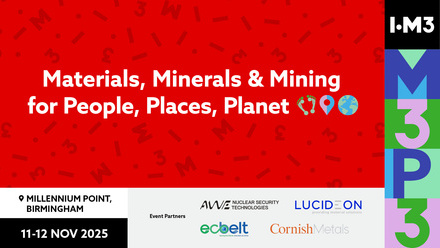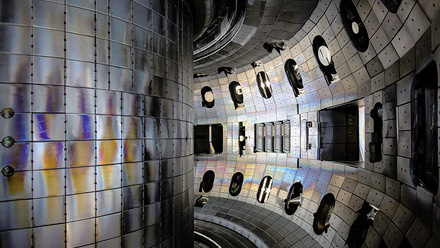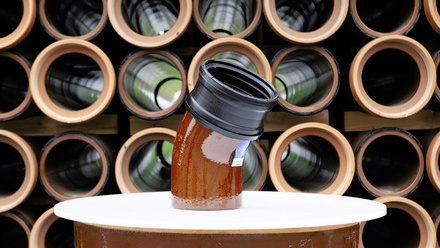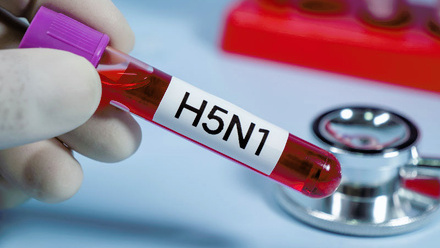Materials matter in challenging conditions
An overview of materials in harsh environments.
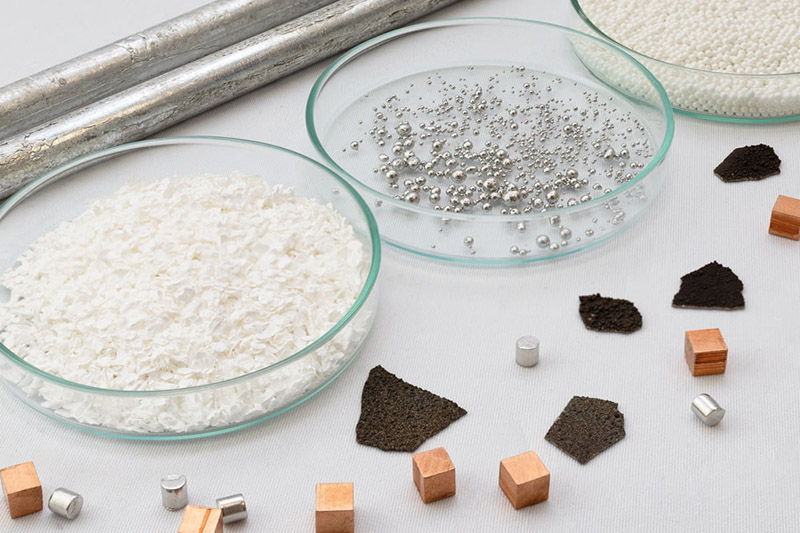
There are myriad modern industrial processes that rely on components capable of operating in challenging conditions. These parts must withstand high temperatures, pressures, corrosive chemicals, mechanical wear and even radiation exposure.
Materials that can withstand such conditions are needed in industries ranging from power generation and aerospace to chemical processing and oil and gas.
The harsh reality
The ultimate challenge is corrosion. The gradual degradation of materials through chemical and electrochemical reactions has prompted significant research efforts to prevent and mitigate this effect.
Corrosion-induced leakage in iron and steel pipelines can lead to significant natural gas loss, pose an explosion hazard and result in methane emissions. Additionally, susceptibility to corrosion limits the use of lightweight metals such as aluminium.
Management of thermal extremes and repeated cycling also presents a significant challenge. High operating temperatures induce stresses and degradation through oxidation, especially during thermal cycles, leading to mechanical failures. Factors such as a material’s coefficient of thermal expansion, thermal conductivity, fatigue and thermal shock behaviours are essential to avoid matrix microcracks and delamination, thereby ensuring thermal stability.
In addition, high temperature hydrogen attack (HTHA) sees hydrogen react with a metal. This leads to internal cracking, cavity growth and blisters by the formation of methane gas – which cannot diffuse out of the metal.
The internal damage caused by HTHA reduces a material’s mechanical strength and ductility. Specifically, in industrial systems, hydrogen attack can cause premature failure of pressure vessels, pipelines and reactors, posing safety risks and costly repairs.
High pressures can also alter a material’s structure or act as stress raisers unveiling exotic structures and properties, which might cause application instability.
Erosion or wear damage is another challenging process, especially for parts like bearings, wear pads, gears and rotating shafts. Wear mechanisms, such as adhesive wear, abrasive wear, surface fatigue and corrosion, can lead to catastrophic failures and disastrous consequences.
Meanwhile, exposure to neutron irradiation for extended periods alters a material’s microstructure and chemistry while degrading fracture-resistance properties. Irradiation creep can cause dimensions instability due to void swelling and stress relaxation.
Irradiation temperature, dose and dose rate are therefore key parameters when selecting materials for reactor components, alongside assessing functional integrity, performance, durability and resistance to radiation damage.
It is important to highlight that hydrogen embrittlement is a major challenge in both industrial applications and research. This phenomenon, where metals become brittle and lose ductility due to hydrogen exposure, leading to cracks and ultimately failure, is difficult to predict. It is gaining attention due to the global shift towards clean energy and hydrogen storage.
In situ
Aerospace
Turbines, combustion chambers and other critical components in aerospace face temperatures that exceed 1,500°C, while spacecraft on re-entry can experience temperatures of more than 2,000°C. In such extremities, many metals and alloys experience oxidation and corrosion, thermal stresses leading to expansion and contraction, and slow but permanent deformation known as creep.
From fuselage to landing gear, high-pressure stability presents another challenge for airplane and spacecraft manufacturing.
And it isn’t just static pressure – during flight, pressure can fluctuate wildly. Cabins must be pressurised to maintain habitable environments. While in space, the external pressure attempts to pull fuselage walls outwards. The materials used must remain strong enough to survive both internal and external forces without deformation or failure.
And throughout all of this, weight remains a specific factor to ensure efficiency.
Electrical power generation
Gas, steam and combined cycle power plants rely on steam turbines, which are meticulously crafted from highly durable alloys designed to withstand the extreme temperatures and high levels of friction encountered during operation.
Researchers are also now actively exploring new materials that can effectively harvest waste heat from industrial processes. This could significantly enhance the overall efficiency of these plants, contributing to more sustainable energy production. But most existing materials used for heat exchange are not compatible with the extreme conditions prevalent in power generation facilities.
The combination of advanced materials in steam turbines and the ongoing research into heat-exchange materials underscores the importance of material science in the evolution of power generation technology.
Nuclear power
The drive for carbon-free electricity, coupled with the challenges in constructing nuclear power plants, requires materials that extend the lifetimes of nuclear reactors by being more resistant to irradiation-induced degradation, corrosion, cracking and embrittlement.
The outer layer of a nuclear fuel rod assembly is encased with cladding materials to separate the coolant and nuclear fuel. These assemblies must be refuelled several times a year.
Currently, zirconium alloys are used that react exothermically with steam at temperatures beyond 1,200°C, potentially contributing to nuclear core damage. Longer-lasting fuel-cladding materials with higher chemical stability and less chemical reactivity could help improve the service life of fuel assemblies and significantly reduce reactor downtime.
In addition, fusion energy presents a promising avenue for cleaner electricity, but poses extreme conditions, including high temperatures, intense neutron radiation and strong magnetic fields. Materials must maintain their structural integrity and functionality in these environments over long periods to ensure the reactor’s safety and efficiency.
The inner walls of fusion reactors are lined with materials like tungsten, which can endure the high-heat fluxes generated during reactions. Additionally, the development of advanced superconducting magnets, which are crucial for maintaining the magnetic confinement of the plasma, relies on materials that can operate at very low temperatures and high-magnetic fields without losing their superconducting properties.
Automotive
In the automotive and electric vehicle (EV) sectors, components are encountering a range of extreme conditions that are challenging material integrity and performance. EV batteries, for instance, must operate efficiently across a wide temperature range without degrading. This requires materials that can resist thermal expansion and contraction, as well as oxidation and corrosion.
Additionally, the electric motors and power electronics in EVs generate significant heat, necessitating advanced thermal management systems to prevent overheating and ensure longevity.
Meanwhile, the chassis and body panels must be lightweight, yet strong enough to withstand impacts and stresses during operation. This is particularly important for maintaining vehicle efficiency and safety. Advanced composites and high-strength alloys are often used to achieve this balance, providing the necessary durability without adding excessive weight.
Lithium-ion batteries, which are the cornerstone of modern EVs, present their own set of challenges. These batteries must maintain high-energy density and long cycle life while being safe and reliable. The materials used in the cathode, anode and electrolyte must withstand repeated charging and discharging cycles without significant degradation.
Researchers are continually exploring new materials and chemistries to improve battery performance, such as solid-state electrolytes that promise higher energy densities and enhanced safety.
Moreover, new technologies, such as solid-state batteries, are pushing the boundaries of material science. These promise higher energy densities and improved safety, but require materials that can handle the unique challenges of solid electrolytes and high-voltage operation.
Pushing the envelope
Metals and metal alloys
Metals and metal alloys play a crucial role in operating in harsh environments, including stainless steel, titanium alloys and nickel alloys. These materials are known for their strength and durability under extreme temperatures and high pressures, and resistance to corrosion and oxidation.
However, common alloys still lack certain properties such as high-temperature stability, resistance to creep and enhanced fatigue life.
Advanced alloys, so-called ‘superalloys’, are particularly useful in aerospace and automotive applications, where components are exposed to high thermal and mechanical stresses.
Several superalloys have been deployed to counter these challenges. Nickel superalloys, including Inconel 718, Inconel 750, Hastelloy C, Nimonic 80A and Haynes 282, can maintain their mechanical properties and oxidation resistance at temperatures greater than 700°C.
Recently, high-entropy alloys (HEAs) have been developed, which offer a unique combination of strength, ductility and corrosion resistance. Additionally, aluminium-lithium alloys are being explored for their lightweight properties and high strength, making them ideal for aerospace and automotive applications where weight reduction is critical.
Moreover, recent advances in material science have introduced metal matrix composites, which combine metal with ceramic or other materials to enhance properties like stiffness, strength and thermal stability. They are particularly useful in automotive and aerospace applications where high performance is required.
Another category is made up of shape-memory alloys, which can return to their original shape after deformation when exposed to a specific temperature. They are often used in actuators and sensors in the automotive and aerospace industries. It is worth noting that amorphous metals (metallic glasses), which have a disordered atomic structure, provide superior strength and elasticity compared to crystalline metals. These are used in applications requiring high-wear resistance and strength.
Graphene-reinforced metals are also gaining traction. Incorporating graphene into metals can significantly enhance their mechanical properties, including strength, conductivity and resistance to wear and corrosion.
The ongoing R&D in this field continues to push the boundaries of materials science, leading to more resilient and efficient solutions for various industrial applications.
Advanced ceramics
Advanced ceramics play a crucial role in operating in harsh environments. Silicon carbide (SiC), alumina (Al₂O₃) and zirconia (ZrO₂) are known for their exceptional hardness, thermal stability, and resistance to wear and corrosion.
Silicon carbide, for example, is extensively used in high-temperature gas turbines and automotive brake discs due to its high-thermal conductivity and low-thermal expansion. However, common ceramics still lack toughness, resistance to thermal shock and enhanced mechanical strength.
To try to overcome this, advanced ceramics have been developed. Silicon nitride (Si₃N₄), known for its high strength and toughness, is used in engine components and bearings, where high-mechanical performance is required.
Boron carbide (B4C), one of the hardest known substances, is used in armour plating and cutting tools due to its exceptional hardness and wear resistance. Moreover, nitrides like aluminium nitride (AlN), which has excellent thermal conductivity and electrical insulation properties, is used in electronic substrates and heat sinks. And yttria-stabilised zirconia (YSZ), which is characterised by high-fracture toughness, is used in thermal-barrier coatings for jet engines and other high-temperature applications.
New ceramic composites, like ceramic matrix composites, combine ceramic fibres with a ceramic matrix to enhance toughness, thermal stability and resistance to thermal shock.
On the other hand, ceramic-based functionally graded materials have a gradual variation in composition and structure, and are designed to withstand high temperatures, corrosive liquids and gases, abrasion, and mechanical- and thermal-induced stresses.
Additionally, advanced ceramics such as Goodfellow’s Macor and Shapal Hi-M Soft have gained attention for their unique properties. Macor is a glass ceramic that can be easily machined into complex shapes using conventional metalworking tools. It offers good thermal stability, electrical insulation and resistance to high temperatures, making it suitable for applications in aerospace, electronics, medical devices and high-vacuum applications.
Shapal Hi-M Soft is an AlN ceramic that combines high-thermal conductivity with excellent machinability.
It is used for precise thermal management and electrical insulation, such as in semiconductor manufacturing and high-power electronics.
These innovations are essential for improving the performance and longevity of components used in harsh environments.
Polymers and composites
Another critical material group is polymers and their composites, particularly those based on carbon. A few examples of widely used advanced polymers are para-aramid (Kevlar), polyether ether ketone (PEEK) and polyimides (PI) – known for their exceptional strength-to-weight ratio, thermal stability, and resistance to wear and corrosion.
Composites such as carbon-fibre-reinforced polymers (CFRPs) combine properties like stiffness, strength and thermal stability.
CFRPs are extensively used in aircraft structures and automotive body panels due to their high strength and lightweight properties. However, common polymers still lack certain properties such as high-temperature stability, resistance to UV degradation and enhanced mechanical strength.
Advanced materials like carbon-nanotube-reinforced and graphene-reinforced polymers, which have excellent wear resistance, great electrical conductivity and superior mechanical properties, are used in electronic components and demanding applications in aerospace, automotive and medical sectors. As are high-performance thermoplastics like PEEK and polyetherimide and polyimides like Kapton.
In medical devices and laboratory equipment, where high transparency, low density and excellent chemical resistance are needed, a polymethylpentene like TPX is being deployed. Polymethylmethacrylate (PMMA) is valued for its clarity, wear resistance and resistance to UV light.
Recently, smart coatings have introduced a passive layer, containing anti-fouling agents and corrosion inhibitors. The use of graphene and nanostructured coatings has improved barrier and self-healing properties.
Materials with low coefficient of friction and excellent wear resistance are carefully chosen. In particular, thermoplastic polymers such as Nylon (PA), PEEK and polyethylene sulphide (PPS) are used in contact with metals where abrasion resistance is the key challenge.
Currently, research in tribology is focused on optimising friction processes. Artificial intelligence (AI) has become crucial for understanding and predicting patterns and trends in tribological phenomena, a field known as ‘tribo-informatics’.
By leveraging AI, researchers can develop predictive models that enhance materials performance in harsh environments. The prediction and development of advanced materials will be significantly influenced by AI and machine learning. These technologies will enable the discovery of new materials with tailored properties for specific applications.


